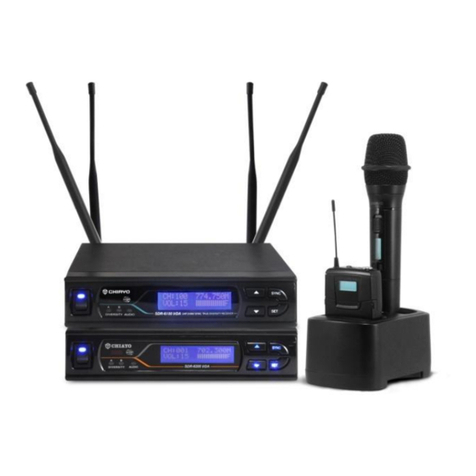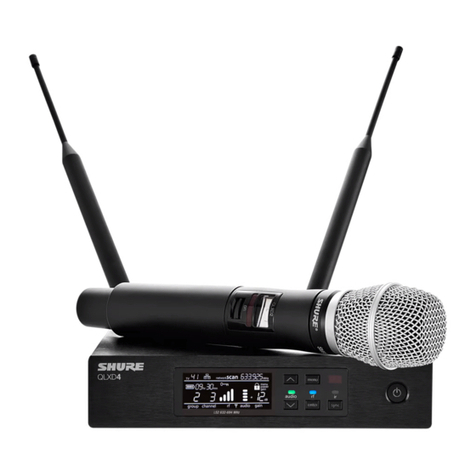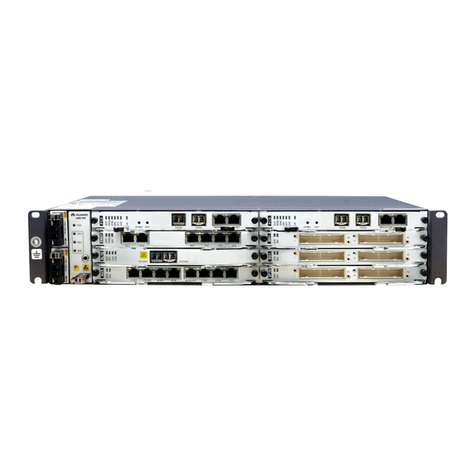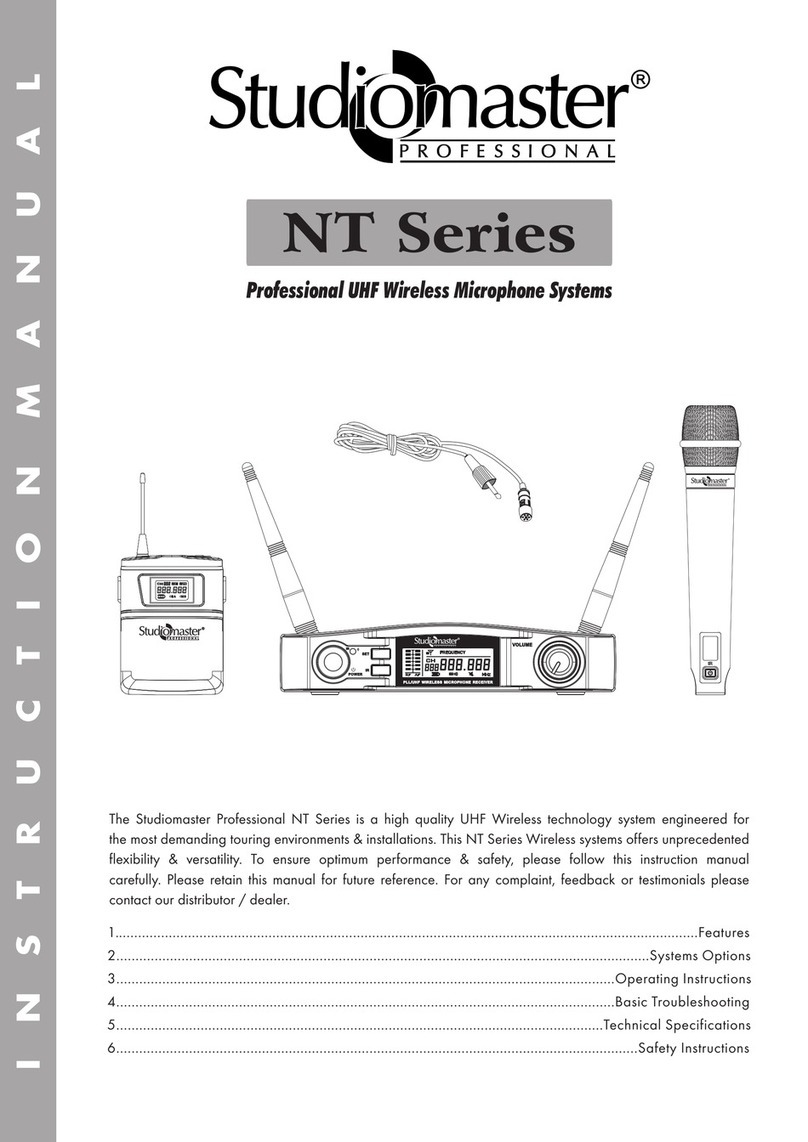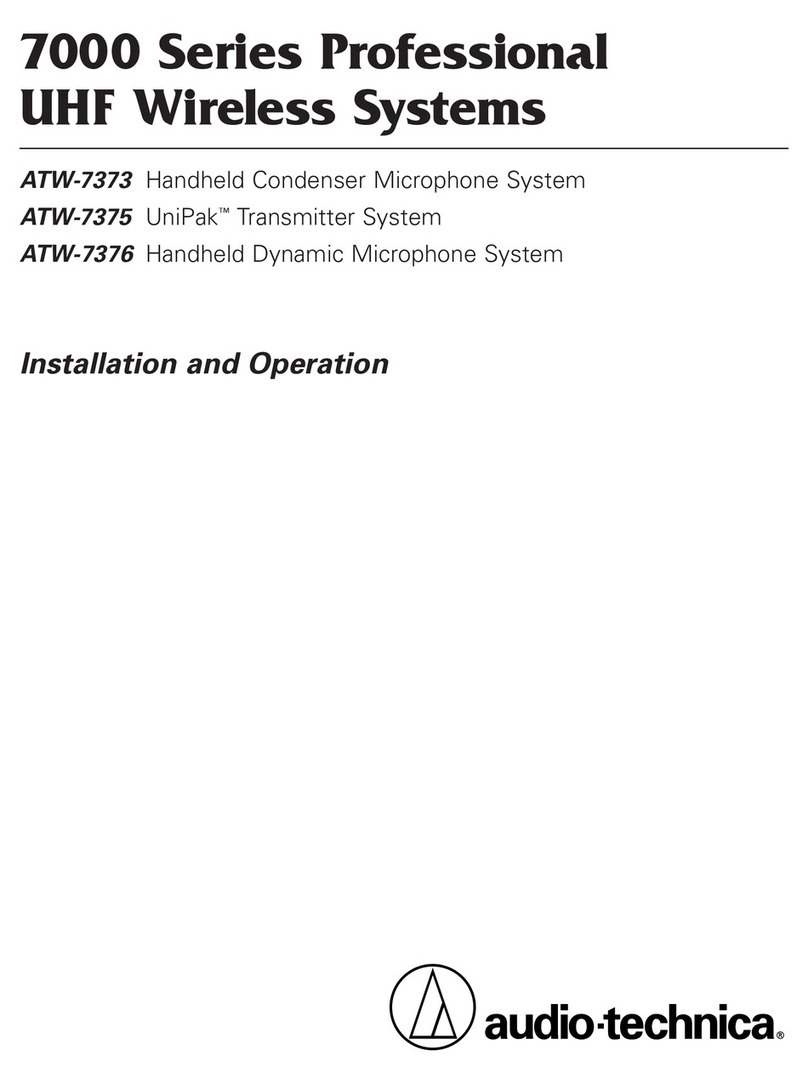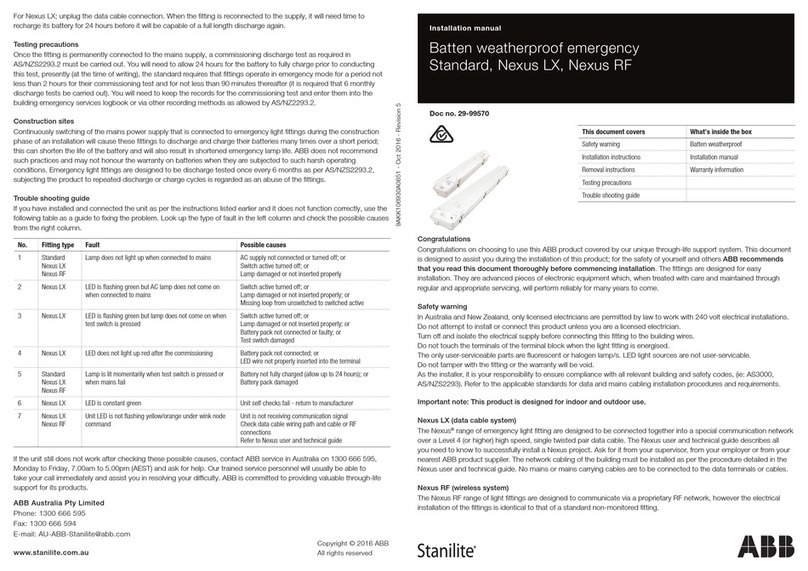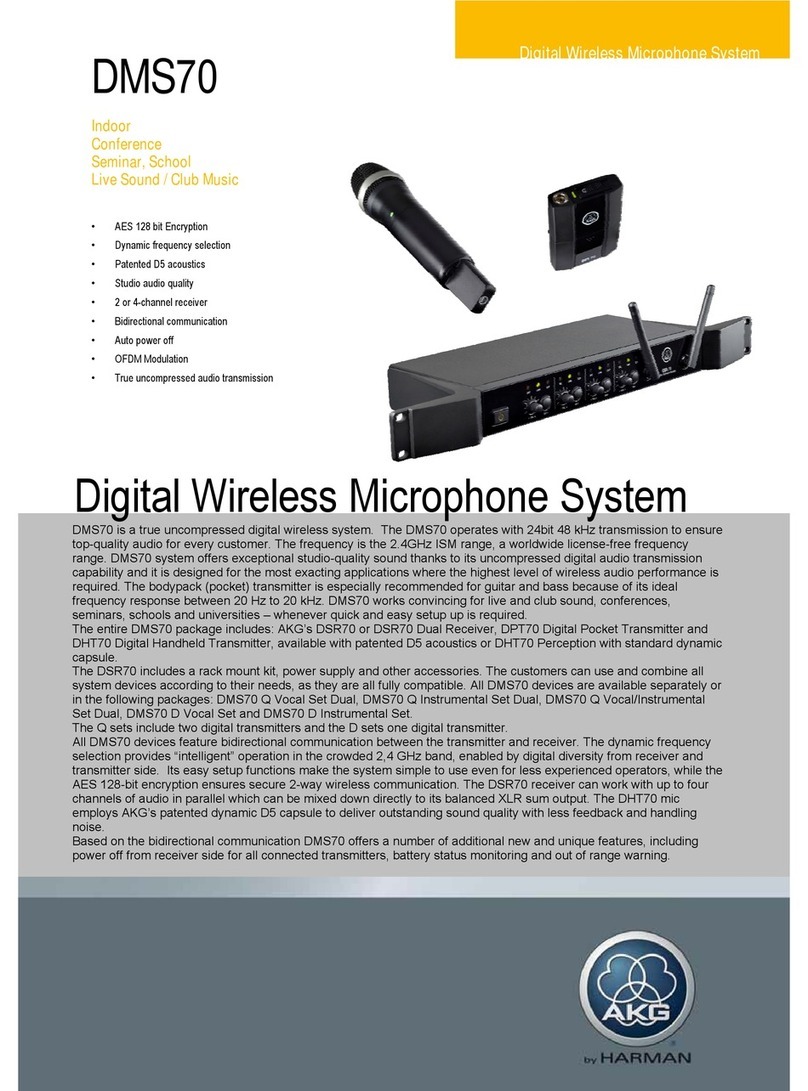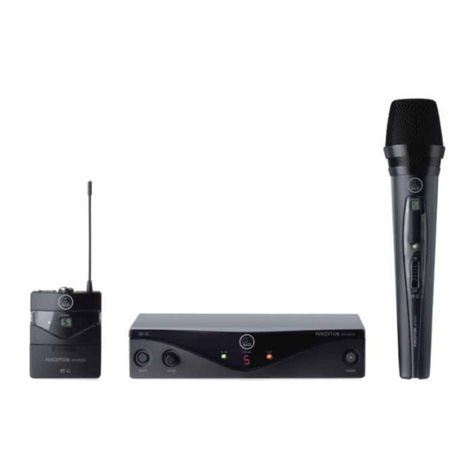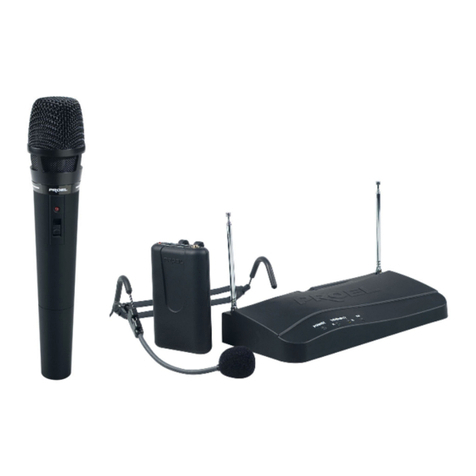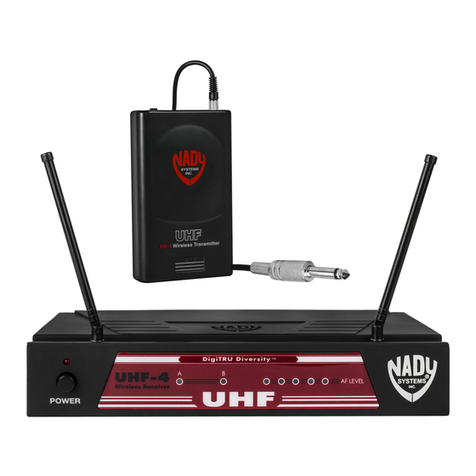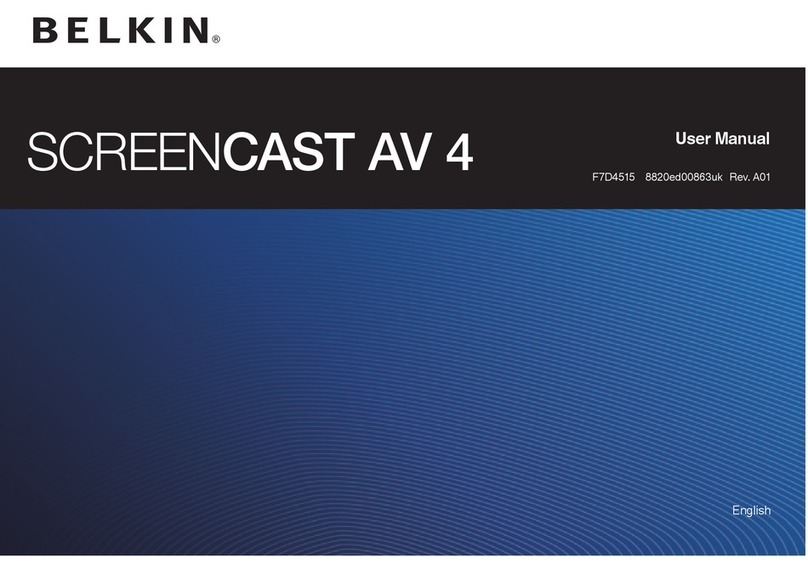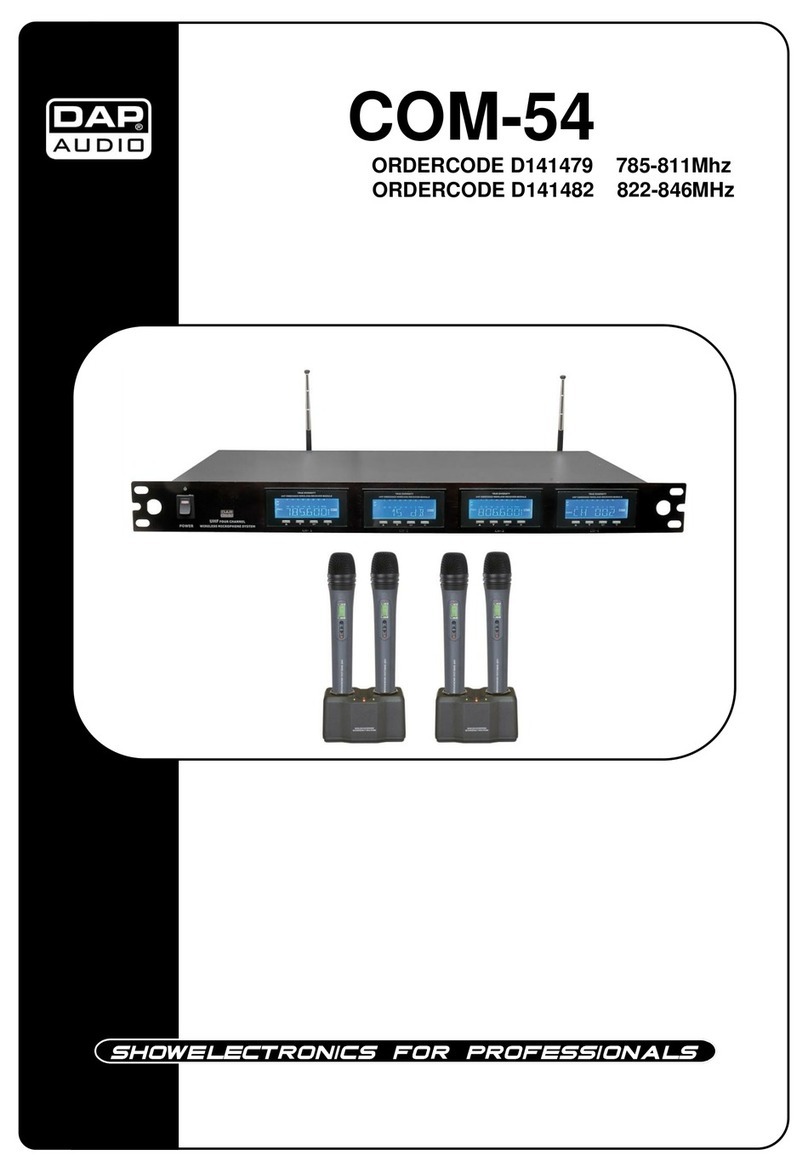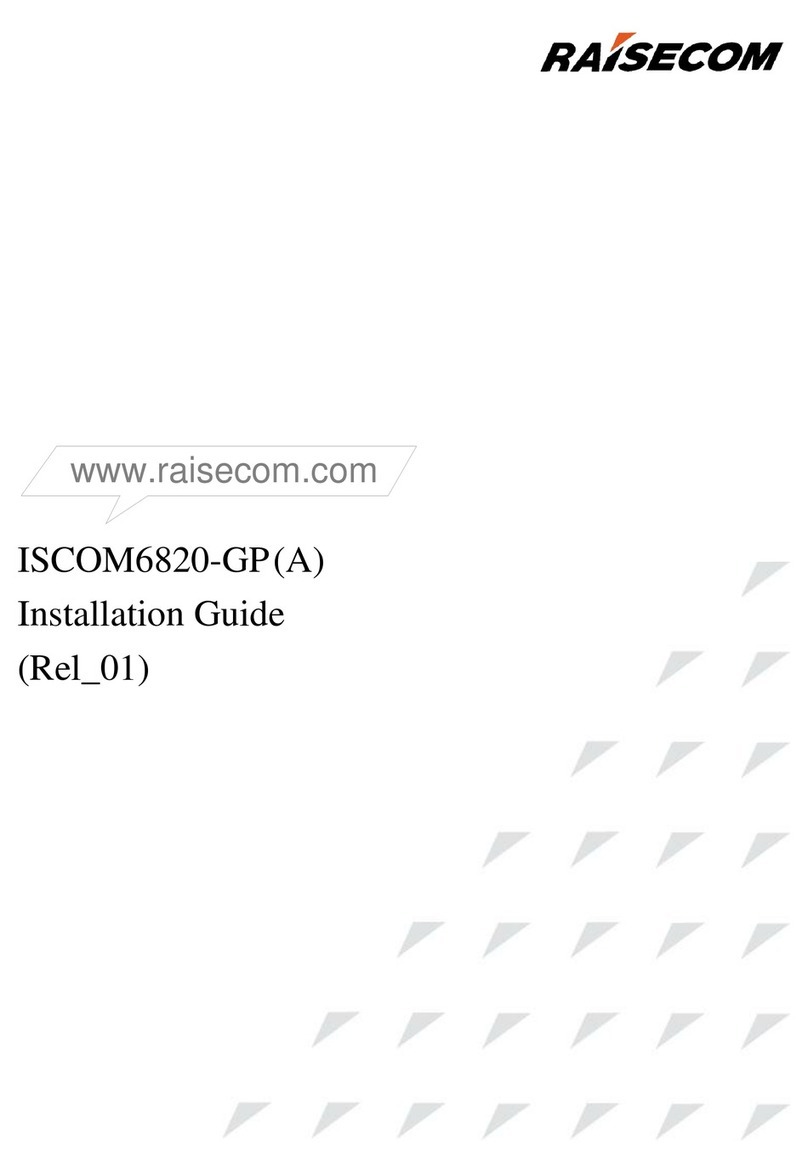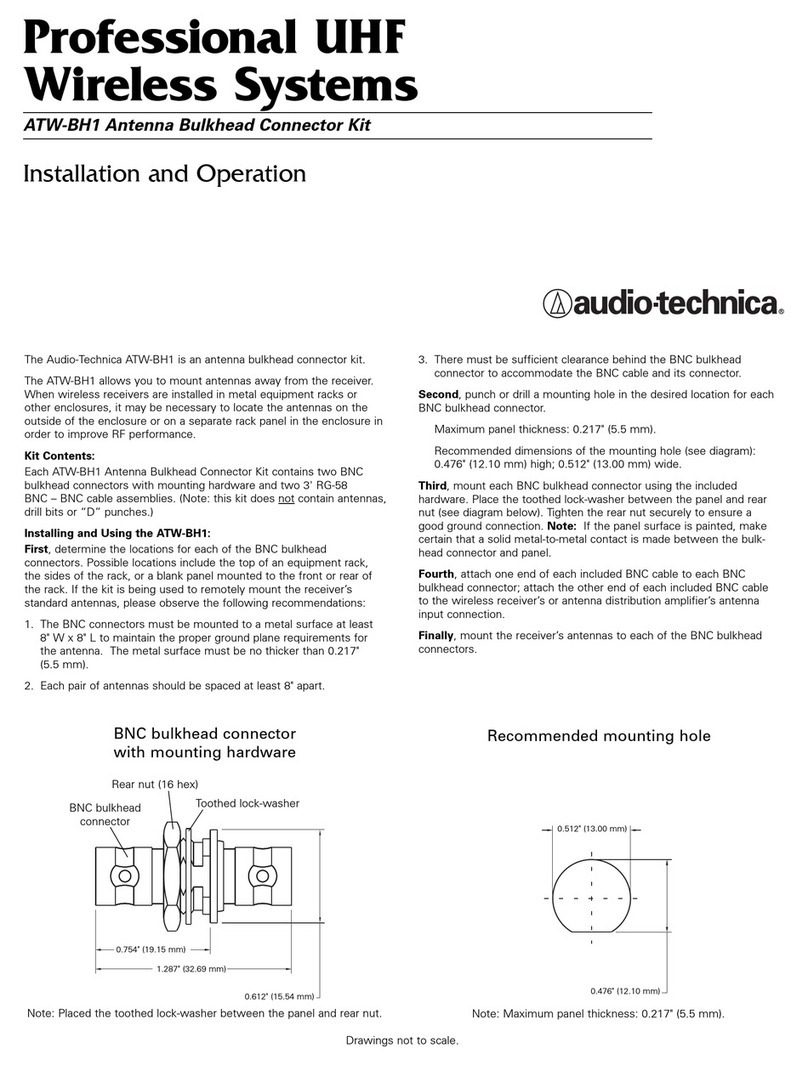Telguard T100C001 User manual

56019201 © 2000 Telular Corporation
TELGUARD®
Cellular Alarm Transmission System
Using Microburst™Control Channel Technology
MODEL T100C001
UL
R
INSTALLATION AND OPERATING INSTRUCTIONS
COMPANY CONFIDENTIAL
For use by TELGUARD®customers only.
Distribution to others strictly prohibited.
December 21, 2000
TELGUARD®is a registered trademark of Telular Corporation. Products are protected
under one or more of the following U.S. patents:
4,658,096 4,737,975 4,775,997 4,868,519 4,922,517
© 2000 Telular Corporation
CORPORATION
®
Corporate Headquarters
647 North Lakeview Parkway
Vernon Hills, Illinois 60061
847-247-9400 Fax: 847-247-0021
T E L U L A R

56019201 Page © 2000 Telular Corporation
i
FOREWORD
Many customers purchase the Telguardbecause they prefer its price and features, but do not intend to use it in an
application that requires UL Grade A Burglary or Fire Listings. If such UL Listings are not required, it is possible to
use model T100C001 that is UL Listed for Supplemental Use only. This means that the T100C001 will not enhance
the grade of service. Also, the T100C001 is not to be used as a main or secondary line for a fire or burglar alarm
system.
NOTICES
ABOUT THIS MANUAL
This manual assumes that youhave basic securitysysteminstallationskills suchas measuring
voltages, stripping wire, properly connecting wires together, connecting wires to terminals, and
checkingphone lines. It also assumes that youhave a familiaritywith the proper installationand
programming tasks related to various Control/Communicator panels.
The material and instructions covered in this manual have been carefully checked for accuracy and
are presumed to be reliable. However, Telular assumes no responsibilityfor inaccuracies and
reserves the right to modify and revise this manual without notice.
It is our goal at Telular to always supply accurate and reliable documentation. If a discrepancy is
found in this documentation, please mail or fax a photocopy of the corrected material to:
Telular Security Products
Technical Services Department
420 Thornton Road, Suite 109
Lithia Springs, GA 30122
Fax: 678-945-1651
© 2000 Telular Corporation. Lithia Springs, GA U.S.A. All rights reserved.
FCC Notices
EXPOSURE TO RADIO FREQUENCY ENERGY
In 1991, the Institute of Electrical and Electronics Engineers (IEEE), and in 1992, the American National
Standards Institute (ANSI), updated the 1982 ANSI Standard for safety levels with respect to human exposure
to RF energy. Over 120 scientists, engineers and physicians fromuniversities, government healthagencies
and industry, after reviewing the available body of research, developed this updated Standard. In March,
1993, the U.S. Federal Communications Commission (FCC) proposed the adoption of this updated Standard.
The design of your Telular Telguard DataBurst complies with this updated Standard. Of course, if you
want to limit RF exposure even further than the updated ANSI Standard, you may choose to install the unit in
a manner that locates its antenna at anevengreater distance fromthe general public than is recommended as a
minimum by the standard.
To insure compliance with the standard, when selecting a mounting location for your Telguard DataBurst do
not mount it (or its associated antenna) in an area where the general public could reasonably be within 8
inches (20 centimeters) of the antenna.

56019201 Page © 2000 Telular Corporation
ii
EFFICIENT OPERATION
Donot operate your Telular productwhenholdingthe antenna. Be sure to mountthe unitsuchthatits antenna is a minimumof
eight (8) inches (20 centimeters) is maintained fromthe general public.
For the best service quality, keep the antenna free fromobstructions and point the antenna straight up.
ANTENNA CARE AND REPLACEMENT
Do not use the unit witha damaged antenna. If a damaged antenna comes into contact withthe skin, a minor
burn may result. Have your antenna replaced by a qualified technician immediately. Use only a manufacturer-
approved antenna. Non-approved antennas, modifications, or attachments could impair service quality,
damage the Telguard and violate FCC regulations.
ELECTRONIC DEVICES
Most modern electronic equipment is shielded from RF energy. However, RF energy from cellular devices
may affect inadequately shielded electronic equipment.
RF energy may affect improperly installed or inadequately shielded electronic equipment operating in homes
and businesses. Check withthe manufacturer or its representative to determine if these systems are
adequately shielded fromexternal RF energy.
Consult the manufacturer of any personal medical devices (such as pacemakers, hearing aids, etc.) to
determine if they are adequately shielded from external RF energy.
BLASTING AREAS
To avoid interfering with blasting operations, turn OFF your unit when in a “blasting area” or in areas
posted: “Turn off two-way radio.” Construction crews often use remote control RF devices to set off
explosives.
POTENTIALLY EXPLOSIVE ATMOSPHERES
Turn OFF your unit when in any area with a potentially explosive atmosphere. It is rare, but your Telguard
DataBurst or its accessories could generate sparks. Sparks in such areas could cause an explosion or fire
resulting inbodily injury or even death.
Areas with a potentially explosive atmosphere are often, but not always, clearly marked. They include
fueling areas suchas gas stations; below deck on boats; fuel or chemical transfer or storage facilities; areas
where the air contains chemicals or particles, such as grain, dust, or metal powders; and any other area
where you would normally be advised to turn off your vehicle engine.
Do not transport or store flammable gas, liquid or explosives in the area of your Telguard DataBurst or
accessories.
Vehicles using liquefied petroleum gas (such as propane or butane) must comply with the National Fire
Protection Standard (FPA-58). For a copy of this standard, contact the National Fire Protection Association,
One Batterymarch Park, Quincy, MA 02269, Attn: Publications Sales Division.
--------------------------------------------------------------------------------
FCC PART 15 CLASS B COMPLIANCE
This equipment has beentested and found to complywiththe limits for a Class B digital computingdevice, pursuant to Part
15 ofthe FCCrules. These limits are designed to provide reasonable protectionagainstharmful interference ina residential
installation. This equipmentgenerates, uses and canradiate radio frequencyenergyand, ifnot installed and used in
accordance withthe instructions, maycause harmful interference to radio communications. However, there is no guarantee
thatinterference will notoccur ina particular installation. If this equipmentdoes cause harmful interference to radio or
televisionreception, whichcanbe determined byturningthe equipment OFF and ON, the user is encouraged to tryto correct
the interference byone or more ofthe followingmeasures:
•Reorient or relocate the radio/television antenna.
•Increase the separation between the radio/television equipment and the Telguard terminal.

56019201 Page © 2000 Telular Corporation
iii
•Connect the radio/television equipment to an outlet on a branch circuit different fromthat to which the
Telguard terminal is connected.
•Consult your Authorized Telular Dealer or an experienced radio/TV technician for additional suggestions.
The user or installer may find the following booklet prepared by the Federal Communications Commission
helpful, “Interference Handbook”. The booklet is available fromthe U.S. Government Printing Office,
Washington, DC 20402.
The user shall not make any changes or modifications to the equipment unless authorized by the Installation and Operating
Instructions. Unauthorized changes or modifications could void the user’s authorityto operate the equipment.
PART 68
This equipment complies withPart 68 ofthe FCC Rules. Located behind the back-up batteryofthe Telguard
model
T100C001 is a label that contains, amongother information, the FCC RegistrationNumber and Ringer Equivalence Number
(REN) for this equipment. Ifrequested, this informationmustbe provided to the Telephone Company.
The Telguard
Cellular Alarm Transmission System is registered for connection to the public telephone
network using an RJ38X or RJ31X jack.
The ringer equivalence number (REN) is used to determine the quantityof devices which may be connected
to the telephone line. Excessive REN's on the telephone line may result in the devices not ringing in response
to an incoming call. Inmost, but not all areas, the sum of the REN's should not exceed five (5.0). To be
certain of the number of devices that may be connected to the line, as determined by the total number of
REN's, contact the telephone company to determine the maximumof REN for the calling area.
If the Telguard
Cellular Alarm Transmission System caused harmto the telephone network, the Telephone
Company will notify youin advance that temporarydiscontinuance ofthe service maybe required. But if
advance notice is notpractical, the Telephone Company will notify the customer as soonas possible. Also,
youwill be advised of your rights to file a complaint with the FCC if youbelieve it is necessary.
The telephone company maymake changes in it's facilities, equipment, operation, or procedures that could
affect the operationof the equipment. If this happens, the Telephone Company will provide advance notice in
order for you to make the necessary modifications in order to maintain uninterrupted service. If trouble is
experienced with the Telguard
Cellular Alarm Transmission System please contact Telular Technical
Service inthe U.S.A. for repair and (or) warranty information.
Telular Security Products
TECHNICAL SERVICES DEPARTMENT
420 Thornton Road, Suite 109
Lithia Springs, GA 30122
Phone: (800) 229-2326
Ifthe trouble is causingharmto the telephone network, the Telephone Companymayrequestthatyouremove the equipment
fromthe networkuntil the problemis resolved.
The customer (user) should not attempt any repair to the Telguard
Cellular Alarm Transmission System.
Repair of this equipment should be referred to only qualified technical personnel.
Note that this equipment cannot be used on the public coin service provided by the Telephone Company.
Connection to Party Line Service is subject to state tariffs. (Contact the state public utilitycommission or
corporation commission for information).

56019201 Page © 2000 Telular Corporation
iv
FUTURE TESTING AND LIMITATIONS ON USE
Telguardis part of an advanced design alarm-communication system. It does not offer guaranteed protection against
burglary and fire. Any alarmcommunication systemis subject to compromise or failure.
The Telguardwill not work without power. Devices powered by AC will not workif the AC power supplyis off
for any reason, however briefly, and at the same time, the backup battery is missing, dead or not properly installed.
The cellular radio network, needed to transmit alarmsignals froma protected premises to a central monitoring station,
may be inoperable or temporarily out of service. Cellular radio networks are also subject to compromise by
sophisticated methods of attack.
This equipment, like any other electrical device is subject to component failure. Although this equipment is designed
to be long lasting, the electrical components could fail at any time.
Due to these limitations, we recommend that if the automatic self-test feature is not enabled, other arrangements be
made with the user to test the systemat least once every three months. Moreover, arrangements should also be made
for on site inspection/test by a licensed alarm installer at least once each year.

56019201 Page © 2000 Telular Corporation
v
TABLE OF CONTENTS
FOREWORD..................................................................................................................................................................I
NOTICES........................................................................................................................................................................I
ABOUT THIS MANUAL ...................................................................................................................................................I
FCC NOTICES...............................................................................................................................................................I
EXPOSURE TO RADIO FREQUENCY ENERGY...................................................................................................................I
EFFICIENT OPERATION.................................................................................................................................................II
ANTENNA CARE AND REPLACEMENT............................................................................................................................II
ELECTRONIC DEVICES..................................................................................................................................................II
BLASTING AREAS.........................................................................................................................................................II
POTENTIALLY EXPLOSIVE ATMOSPHERES.....................................................................................................................II
FCC PART 15 CLASS B COMPLIANCE..........................................................................................................................II
PART 68......................................................................................................................................................................III
TECHNICAL SERVICES DEPARTMENT ...........................................................................................................................III
FUTURE TESTING AND LIMITATIONS ON USE ...............................................................................................IV
1.0 GENERAL DESCRIPTION AND OPERATION...........................................................................................1
2.0 FEATURES........................................................................................................................................................1
2.1 OPERATING MODE............................................................................................................................................1
2.2 C/C COMPATIBLE COMMUNICATION FORMATS................................................................................................2
2.3 COMPLETE SUPERVISION OF COMMUNICATION PATHS.....................................................................................2
2.3.1 Line Fault Condition (LFC)...................................................................................................................2
2.3.2 Telco Communications Failure Condition (CFC) .................................................................................2
2.3.3 No Service Condition (NSC)...................................................................................................................2
2.3.4 Radio Communications Failure Condition (RFC).................................................................................3
2.4 COMPLETE POWER SUPERVISION......................................................................................................................3
2.4.1 Low/Missing Battery Condition (LBC) ..................................................................................................3
2.4.2 AC Failure Condition (ACFC)................................................................................................................3
2.4.3 Watchdog Monitor/Reset (WR) ..............................................................................................................3
2.4.4 Catastrophic Failure (CF).....................................................................................................................3
2.5 TELGUARD AUTOMATIC SELF-TEST REPORT .....................................................................................................4
2.5.1 Telguard Remote Query Capability.......................................................................................................4
2.6 TELGUARD TERMINAL STRIP CONNECTIONS.....................................................................................................4
2.6.1 Programmable Supervisory Trip Output (STC) Relay...........................................................................4
2.7 DIAGNOSTIC AND STATUS LEDS......................................................................................................................5
2.7.1 LED Signal Strength Indication.............................................................................................................5
2.8 TELGUARD SETUP PROGRAMMING PARAMETERS ..............................................................................................5
2.9 UL LISTINGS BY MODEL...................................................................................................................................6
2.9.1 Model T100C001....................................................................................................................................6
2.9.2 Model T200C001....................................................................................................................................6
2.9.3 Model T300C001....................................................................................................................................6
3.0 REQUEST TELGUARD ACTIVATION FOR CELLULAR SERVICE FROM TELULAR .....................6
3.1 GETTING READY.........................................................................................................................................7
4.0 INSTALLATION SUMMARY.........................................................................................................................7
4.1 TRANSMIT C/C ALARMS OVER THE TELCO CONNECTION.................................................................................7
4.2 PROGRAM TELGUARD AND CONFIRM COMMUNICATIONS INTEGRITY ...............................................................7
4.3 TRANSMIT C/C ALARMS OVER THE CELLULAR RADIO NETWORK .....................................................................8

56019201 Page © 2000 Telular Corporation
vi
4.4 CONNECTTELCO LINE AND SUPERVISORY TRIP OUTPUT..................................................................................8
4.5 COMPLETE THE INSTALLATION .........................................................................................................................8
5.0 INSTALLATION STEPS .................................................................................................................................8
5.1 STEP 1: TRANSMIT C/C ALARMS OVER THE TELCO CONNECTION....................................................................9
5.2 STEP 2: PROGRAM TELGUARD AND CONFIRM COMMUNICATIONS INTEGRITY.................................................10
5.2.1 Locate Unit...........................................................................................................................................10
5.2.2 Connect Backup Battery and AC Power Transformer.........................................................................11
5.2.3 Decide on a STC Trip Output Strategy................................................................................................11
5.2.4 Default Programming...........................................................................................................................12
5.2.5 Complete the Telguard Programming Data Sheet...............................................................................12
5.2.7 Connect Antenna and Temporarily Place Unit....................................................................................13
5.2.8 Measure Received Signal Strength (RSSI) for Best Antenna Placement.............................................14
5.2.9 Request Telguard Activation "PING" from Telular's IVR...................................................................15
5.3 STEP 3: TRANSMIT C/C ALARMS OVER THE CELLULAR RADIO NETWORK.......................................................17
5.3.1 Connect C/C to Telguard
Jack 2...........................................................................................................17
5.3.2 Verify Alarm Signal Transmissions over Cellular...............................................................................18
5.4 STEP 4: CONNECT TELCO LINE AND SUPERVISORY TRIP OUTPUT...................................................................19
5.4.1 Be sure the Telguard is the first device on incoming phone line........................................................19
5.4.2 Connect RJ31X to Telguard Jack 1 and Check LFC............................................................................20
5.4.3 Connect STC Trip Output.....................................................................................................................20
5.4.4 Check Telguard Supervisory Trip to C/C ............................................................................................21
5.5 STEP 5: COMPLETE THE TELGUARD INSTALLATION .........................................................................................22
5.5.1 Check Settings......................................................................................................................................22
5.5.2 Permanently Mount and Properly Ground the Telguard Chassis.......................................................22
A1.0 WIRING DIAGRAM......................................................................................................................................23
A1.1 JACK AND PIN ASSIGNMENTS ....................................................................................................................24
A1.2 TERMINAL STRIP PIN ASSIGNMENTS ..........................................................................................................25
A1.3 LED MODES AND FUNCTIONS ...................................................................................................................26
A1.4 JUMPERS ....................................................................................................................................................27
A2.0 OPERATIONAL QUICKREFERENCE TABLE........................................................................................28
A2.1 SETUP PROGRAMMING PARAMETERS ..........................................................................................................29
A2.2 TELGUARD COMMUNICATION FORMATS ....................................................................................................30
A2.3 COMPATIBLE CONTROL COMMUNICATORS ................................................................................................30
A2.4 COMPATIBLE RECEIVERS............................................................................................................................30
A2.5 ACTIVATION FORM (FAX to 678-945-1651)......................................................................................31
A3.0 UL INSTALLATION REQUIREMENTS FOR SUPPLEMENTAL USE (MODEL T100C001).............32
A4.0 DETAILED SPECIFICATIONS....................................................................................................................33
A4.1 DIALER TO INTERFACE ELECTRONICS .........................................................................................................33
A4.2 POWER.......................................................................................................................................................33
A4.3 MICROBURSTRADIO ...............................................................................................................................33
A4.4 PHYSICAL...................................................................................................................................................33
A4.5 WARRANTY................................................................................................................................................33
A5.0 PARTS LIST....................................................................................................................................................34
INDEX..........................................................................................................................................................................36

56019201 Page © 2000 Telular Corporation
1
1.0 GENERAL DESCRIPTION AND OPERATION
The Telguardis a cellular radio alarmtransmission device, which is used to provide a backup transmission path
(cellular) for control communicators (C/Cs) in case the primary transmission path (telco) is not available. When
transmitting over cellular, Telguard obtains its data fromthe C/C by way of a telco interface. The device transmits a
Link Request to the Telular operated Communication Center and when a link acknowledgement is received, the
Telguard handshakes with the C/C and causes the C/C to transmit the alarmdata. Telguard encodes the alarmdata into
digital packet data protocol and transmits on one of twenty-one available control channels used by the local AMPS
cellular network provider. The signal is routed from the network provider through the Aeris virtual network system to
the decoding (message) center. The CommunicationCenter performs like a central stationreceiver and issues the
transmission kiss-off when the last message in the transmission is received. After decoding and reformatting, the
alarmsignal is routed over telco to the appropriate alarmcompany central station for action.
Telguard is compatible with most control/communicators and no special equipment is needed at the premises or in the
alarm monitoring station. All Telguard programming is done with a standard touch-tone telephone or lineman’s buttset
and Telguard can be installed wherever cellular service is available. Different dialing patterns between telco and
cellular, cellular area code changes and PBX access numbers are not a problemfor installers. Fraud and cloning
problems are eliminated since all transmissions occur over the cellular control channels in packet-type data format
and never over any voice channels.
In a typical alarm installation, Telguard is installed in the same area as the host alarm system. The incoming telco line
is connected fromthe RJ31X to Telguard and then to the host control/communicator's digital dialer in the normal
fashion. A programmable supervisory trip (STC) output is available for connection to the host control/communicator's
trip zone input terminals in order to provide a Telguard trouble signal to the C/C. Additionally, automatic self-test and
status-on-demand report signals are transmitted exclusively over the cellular network to the Communication Center.
All models are capable of transmitting an automatic self-test signal to the central station on a daily, weekly, or monthly
schedule. Telguard has its own internal power supply/battery charger. All telco line and cellular monitoring,
switching and supervisory functions are built in--no extra modules are required.
All Telguard models come with a special Microburst™ compatible 3-watt cellular transceiver (without handset),
antenna, interface withintegrated control and power module, connecting cable, and plug-in transformer. The installer
to provide backup times that range fromtwenty-four to seventy-two hours must supply a rechargeable 12V battery,
7.0AH or 14.0AH. Type of enclosure and type of antenna included are the only differences among the three models
available. Economy model T100C001, UL Listed for Supplemental Use only, comes in a flame-retardant plastic
enclosure (9½in.x4½in.x1¾in.) with whip antenna. Model T200C001, UL Listed for residential and commercial fire,
as well as residential burglary, comes in a standard metal enclosure (12in.x12in.x3½in.) with keylock and magnetic
mount antenna with12ft. of cable. Model T300C001, UL Listed for all residential burglary and fire, commercial
burglary and fire, and bank applications comes in an attack-resistant enclosure with keylock, tamper switch, and
magnetic mount antenna.
The Listed equipment at the Telular operated Communication Center (TCC) plays a key role in the operationof every
Telguard. All Telguard units are required to use the Communication Center because of the C/C alarmsignal format
encoding and decoding requirements used in packet-data transmissions over the cellular network control channels.
The CommunicationCenter also manages the real-time databases for cellular activation, airtime, billing, installation
site location, and a complete history of every Telguard's operating conditions. These conditions include programming
setup information, cellular alarmtransmission information, supervisorytrouble information, status-on-demand
information, and automatic self-test information. This informationis made available to authorized personnel through
Telular's Interactive Voice Response System(IVR), Telular's computer access Communication Center Intranet System,
or though Telular's Customer Service Center.
2.0 FEATURES
This section summarizes the key features of the Telguard. Actual installation instructions begin in Section 5.0.
2.1 OPERATING MODE
The Telguard is a cellular radio packet transmissiondevice that is installed at the protected premises to
provide alarm transmission integrity for security systems. It is used to provide a backup transmission path
(cellular) for control communicators (C/Cs) in case the primary transmission path (telco) is not available. If

56019201 Page © 2000 Telular Corporation
2
the telco line is cut or the C/C is unable to communicate with the central station receiver due to busy
telephone line circuits then Telguard transmits the alarmmessage over the cellular network.
2.2 C/C COMPATIBLE COMMUNICATION FORMATS
The Telguard reads the C/C’s alarmmessages and converts the C/C’s digital data format into Microburst
packet data protocol for transmission over the cellular radio network. In order for the C/C to be compatible
with the Telguard, the C/C must be programmed to transmit alarm messages to the central station using one of
the following non-extended formats:
•3+1 pulse; 10pps, Double Round, 1400Hz ack
•3+1 pulse; 20pps, Double Round, 2300Hz ack
•3+1 pulse; 40pps, Double Round, 2300Hz ack
•4+2 pulse; 20pps, Double Round, 1400Hz ack
•4+2 pulse; 20pps, Double Round, 2300Hz ack
•4+2 pulse; 40pps, Double Round, 2300Hz ack
•Radionics ModemIIE or 3A2
•Ademco Contact ID
Hexadecimal account numbers (001-FFF or 0001-FFFF) can be used with 3+1 or 4+2 formats, but Contact
ID and Radionics modem IIE or 3A2requires a four digit account number using digits 0-9 (0001-9999).
2.3 COMPLETE SUPERVISION OF COMMUNICATION PATHS
The Telguard continuously supervises both the primary (telco) and the secondary (cellular) communication
paths. If either pathbecomes inoperative, the Telguard generates a relay trip output that can be connected to
a zone input of the host control communicator and/or used to activate remote sounding devices.
2.3.1 Line Fault Condition (LFC)
The Telguard monitors voltage on the incoming telco line. If an inoperative telco line is identified,
a telco line fault condition(LFC) is declared and Telguard switches to the cellular path. Once the
telco line restores to normal, Telguard checks the radio link and switches back to the telco path after
any communications on the radio link are completed.
LFC is programmable to trip the supervisory relay output (STC) after a 30 or 60 second delay.
When the STC trips, the STC LED indicates 3 flashes at a time and the C/C zone trip message is
transmitted to the alarm company central station indicating systemtrouble. Upon telco restoral, the
STC relay and LFC LED are returned to normal and a STC restoral message is transmitted if the
C/C is programmed to transmit restorals.
2.3.1.1 PBX Installations
PBX’s and other proprietary phone systems sometimes operate at lower voltages than the
standard telco line. Telguard works equallywell onPBX lines or telco lines.
Note: PBX connections are not allowed in any UL Listed installations.
2.3.2 Telco Communications Failure Condition (CFC)
Telco communications failure condition(CFC) is declared when the C/C fails to deliver the alarm
message to the central stationreceiver after a selected number (1-5) of attempts over an operative
telco line. Immediately upon CFC, Telguard switches to cellular mode and allows the C/C to
attempt five transmissions over the cellular network. If the call is not acknowledged after the fifth
attempt, Telguard switches the C/C backto telco and “disarms” the CFC detection. The CFC
detection is re-armed when the C/C has been on-hook continuously for ten-minutes.
2.3.3 No Service Condition (NSC)
Telguard declares a no service condition (NSC) when the measured “receive” cellular radio signal
strength at the protected premises drops to -114 dBmor less.
NSC is programmable to trip the supervisory relay output (STC) after a 30 or 60 second delay.
When the STC trips, the STC LED indicates 4 flashes at a time and the C/C zone trip message is
transmitted to the central station indicating systemtrouble. Restoral of this condition occurs when a
measurable signal strength greater than –114 dBmis maintained for the trip period of 30 or 60
seconds.

56019201 Page © 2000 Telular Corporation
3
2.3.4 Radio Communications Failure Condition (RFC)
Radio communications failure condition (RFC) is declared when Telguard is unable to transmit
over the cellular network even with acceptable signal strength. Two conditions can cause an RFC
to occur, Link Request failure (RFC1) or Link Termination failure (RFC2).
2.3.4.1 RFC1 (Link Request Failure)
When a LFC or CFC has been declared and there is an alarmsignal to communicate, the
Telguard attempts to transmit its message via radio. When the C/C goes off-hook, the
Telguard transmits a Link Request to the TCC and waits for a Link Request ACK. If the
Telguard does not receive an ACK for the transmissionbefore the C/C hangs up, it will
retransmit the Link Request again when the C/C goes off-hook for a redial attempt. If the
Telguard does not receive an ACK after three attempts, then an RFC will be declared
which trips the STC relay, causes the STC LED to flash five times and switches the
Telguard to Telco. Restoral of RFC occurs when the communication cycle is completed.
2.3.4.2 RFC2 (Link Termination Failure)
After the Telguard receives a Link Request ACK fromthe TCC, the Telguard
communicates with the C/C to acquire the alarmmessage and transmits the message via
radio. If the Telguard does not receive a link termination ACK (where the TCC
acknowledges receiving the transmission) within 150 seconds, it will retry sendingthe
entire transmission. Upon failing two attempts, the Telguard switches to Telco and allows
the C/C to communicate directly with the Central Station. An RFC is declared causing the
STC relay to trip and the STC LED to flash five times. Restoral of RFC occurs when the
communication cycle is completed.
2.4 COMPLETE POWER SUPERVISION
Telguard monitors its backup battery as well as its AC power source and reports low or missing power
conditions fromeither. Telguard’s integrated control and power module, protected by a 3 amp 3AG fuse,
incorporates battery charger circuitry that is jumper selectable for high or low battery capacities. The high
battery capacity selection is used for 12V 7Ah, or 12V 14Ah batteries.
2.4.1 Low/Missing Battery Condition (LBC)
The Telguard checks the backup battery voltage on initial power-up and every minute thereafter.
Additionally, a battery voltage test is performed by the Telguard every 24-hours while operating on
AC power in order to measure the loaded battery voltage. Battery charging voltage is lowered to
10.0 volts and the Telguard is forced to operate entirely fromthe battery supply. If the battery
voltage is less than 11.6 volts, a LBC is declared whereby the STC LED blinks twice (½ sec ON, ½
sec OFF, ½ sec ON, ½ OFF every 5 seconds) and the STC relay trips. When the battery voltage
increases to 12.1 volts, the STC LED and STC relay restore.
2.4.2 AC Failure Condition (ACFC)
AC failure condition (ACFC) occurs when AC power is lost or less than 102 VAC for 6 continuous
hours. The AC Power LED goes out immediately, the STC LED blinks once and the STC trip output
is activated after 6 hours. When AC power returns too normal (≥106 VAC for 60 seconds), the AC
Power LED turns on immediately and the STC trip output restores after 60 seconds.
2.4.3 Watchdog Monitor/Reset (WR)
A watchdog monitor/reset (WR) circuit continuously monitors the Telguard’s internal operating
microprocessor functions.
2.4.4 Catastrophic Failure (CF)
Catastrophic Failure (CF) is any condition that causes the Telguard to stop functioning at all levels.
Most commonly because of AC power failure followed bya complete discharge of the backup
battery. The STC trip output is activated and visible indication is loss of all LED activity. Total
loss of power to Telguard does not prevent transmission of alarm messages fromthe host C/C
“through” the Telguard and out over an operative phone line in the normal fashion.

56019201 Page © 2000 Telular Corporation
4
2.5 TELGUARD AUTOMATIC SELF-TEST REPORT
The Telguard automatic self-test signal is originated by the CommunicationCenter on a daily, weekly, or
monthly schedule. When the time for an automatic self-test occurs, the Communication Center transmits a
radio signal to the Telguard and the Telguard responds with a self-test radio signal that is received by the
CommunicationCenter and processed on to the central station, just as normal alarmsignals are processed.
The central station receives the automatic self-test report in the same format that the C/C normally uses for
communication over the telco line. The central station provides the Telguard self-test code along with the
time and frequency of transmission when the Telguard is initially activated. However, an automatic self-test
report can be initiated later, after the Telguard is installed, as well as modifying the time or frequency of
reporting.
The Communication Center captures all current and historical data pertaining to the operation of the Telguard
when it processes the automatic self-test signal on to the central station. This data contains current
operational status (C.O.S.) of the Telguard such as "All OK", "AC fail condition", "low/missing battery
condition", "line fault condition", or any combination of these as well as the current signal strength and mode
of operation. Inaddition, the data also contains historical data for supervisory events that occurred since the
last self-test signal was transmitted. This data includes the number of occurrences of AC fail conditions, low
batteryconditions, line fault conditions, communications failure conditions and no cellular service
conditions. This self-test data is available for review at any time by authorized personnel such as installers,
dealers, central station operators, or technical service personnel. Methods used to review this data include
Telular's Interactive Voice Response System(IVR), Telular's computer access Communication Center
Intranet System, or simply calling Telular Customer Service who can review the data using the "Back Office"
program.
2.5.1 Telguard Remote Query Capability
Although Telguard has the capability for a daily, weekly, or monthlyautomatic self-test, a separate
feature is provided for determining the current operational status of every Telguard. This feature is
called Remote Query and is used to provide real-time operational status for Telguard on-demand. It
is useful in resolving STC events that are reported by the C/C to the central station. Authorized
personnel caninitiate the Remote Queryat anytime by accessing the IVR, Intranet, or calling
Customer Service. The Remote Query causes Telguard to upload current operational status data and
historical data, just as the automatic self-test described above, except that the query signal is
controlled by the one who initiates it. The query signal is held in the Telguard database at the
Communication Center for review and is not forwarded on to the central station.
2.6 TELGUARD TERMINAL STRIP CONNECTIONS
The conveniently located terminal strip provides wiring connections for the Telguard supervisory trip output
(STC-pins 1&2, N.O.), battery leads for connecting to a 12 volt 7.0Ah, or 14.0AH rechargeable battery
(BAT-pin 3 neg., pin 4 pos.), and AC power (16.5VAC 20VA, pins 6&7). The removable terminal strip can
accommodate solid or stranded wire sizes from 14 gauge to 30 gauge.
2.6.1 Programmable Supervisory Trip Output (STC) Relay
The Telguard has one supervisory relay trip output (STC), a single pole single throw (SPST, form
C) with contacts rated at 1.0A 30VDC, and is energized normally open (N.O.) in a powered up state
when no systemtroubles exist. It enables a supervisory trouble code (zone shorted) to be
transmitted to the central stationwhen connected to a C/C’s 24-hour instant input zone. The STC
relay is programmable, using a standard touch-tone telephone or buttset, to meet virtually any
installationrequirement.
The following supervisory features or combinationof features are programmable to trip the STC
relay in order to meet a variety of installation requirements:
•Always Off.
•Trips on AC fail condition (ACFC)
•Trips on low or missing battery condition (LBC).
•Trips on line fault condition (LFC).
•Trips on no service condition (NSC).
•Trips on radio communication failure condition (RFC).

56019201 Page © 2000 Telular Corporation
5
NOTE: For UL installations, all the above features must be enabled.
The following systemtrouble features are embedded in the Telguard for tripping the STC relay and
cannot be changed:
•Trips on catastrophic failure (CF) if all power is lost.
•Trips on transmit-disable command from the Communication Center. This
radio command disables only the Telguard transmitter and would be used, for
example, to shut down the Telguard due to a runaway dialer. The Telguard
receiver function stays active so that a transmit-enable command can be
received by radio to put the Telguard back into normal service.
2.7 DIAGNOSTIC AND STATUS LEDS
Four LEDs are provided as a useful aid during installation and give installers an immediate visual indication
of systemstatus. These LEDs include an AC Power LED indicator that is green when AC power is normal
and off when AC power is low or missing. The red STC LED provides systemtrouble information for
low/missing AC power-ACFC (1 flash), low/missing battery-LBC (2 flashes), telco line fault-LFC (3
flashes), no cellular service-NSC (4 flashes), radio communication failure-RFC (5 flashes) and loss of dial-
tone voltage-DTF (6 flashes). An Operating Mode LED indicates solid yellow for normal operating mode
or slow flash for C/C off-hook when communicating over cellular. A short (1 second) solid green Radio TX
LED indicates it is in a Microburst communication cycle. Separately, these LED’s can be converted into a
bar graph during installation to indicate radio signal strength by using a single jumper (J5) to select normal
LED mode (off) or signal strength mode (on).
2.7.1 LED Signal Strength Indication
The Telguard provides the installer with an easy to use LED radio signal strength indicator (RSSI)
for positioning the unit or remote antenna to obtain the strongest RF signal possible. A signal
strength reading can be obtained at any time there is power applied to the Telguard without affecting
the operation of the unit. When the “RSSI” jumper J5 is “IN”, the Telguard displays the current
received signal strengthwithin 5 seconds and should the jumper be inadvertently left “IN”; the
Telguard will revert to normal display operationafter 10 minutes. The signal strengthis read from
bottomto top using the four sequential LEDs located on the top right side of the printed circuit board
with the Radio TX LED = 1 and the AC POWER LED = 4.
RSSI Value LED’s Lighted RF dBm
NO SVC LED 1* = on, LED 2-4 = off ≤-116 dBm
0 LED 1 = on, LED 2-4 = off ≤-111 dBm
1 LED 1 = on, LED 2 = slow flash
LED 3-4 = off ≥-110 dBm
2 LED 1-2 = on, LED 3-4 = off ≥-100 dBm
3 LED 1-2 = on, LED 3 = slow flash
LED 4 = off ≥-90 dBm(Minimum signal
strength required)
4 LED 1-3 = on, LED 4 = off ≥-80 dBm
5 LED 1-3 = on , LED 4 = slow flash ≥-70 dBm
6 LED 1-4 = on ≥-60 dBm
*Note: LED 1 = Radio TX; LED 2 = Mode; LED 3 = STC; LED 4 = AC Power.
2.8 TELGUARD SETUP PROGRAMMING PARAMETERS
The Telguard will not operate until the unit is activated from the Communication Center. There are no
radio NAM programming requirements since the radios have been preprogrammed at the factory. However,
certain Telguard operating parameters may need to be changed fromthe factory default programming by the
installer during installation in order to have the Communication Center process alarm signals to the central
station. These are setup parameters and are used to tell the Communication Center how to encode alarm
messages to the appropriate alarmmonitoring station. Included in the setup parameters are the C/C reporting
format and cellular operating systemA or B. Also included are the STC supervisory trip input settings, CFC
settings, NFC/LFC trip delay time, and standby battery size. If operating parameters are not uploaded to the
CommunicationCenter, a "missingparameters (MP) condition" exists and the Telguard will not operate.
When an MP condition exists, the Telguard causes the STC LED to light and the STC (SystemTrouble) trip
output to occur.

56019201 Page © 2000 Telular Corporation
6
If default programming is correct or operating parameters are re-programmed into the Telguard, the installer
calls the Telular IVR and follows the activation procedure to request an activation "ping". The
Communication Center responds with a radio acknowledgement to the Telguard clearing the STC condition
and allowing the Telguard to operate over the cellular radio network. The programmed parameters are
transmitted automatically to the TCC when the Telguard is activated. The installer must performany changes
to the Telguard programming data since the Communication Center cannot download data to the unit.
2.9 UL LISTINGS BY MODEL
There is a Telguard model designed to meet UL requirements for virtually any residential and commercial
burglary/fire installation. All models contain the same circuitry and perform the same functions. The
difference between models is simply the type of enclosure and type of antenna that is shipped with the unit.
2.9.1 Model T100C001
Economy model T100C001 is UL Listed for Supplemental Use only and is not to be used as a main
or secondary line for a fire or burglar alarmsystem. This means that the T100C001 will not
enhance nor detract from the grade of service of the UL Listed alarmsystem being used. Model
T100C001 has a compact plastic enclosure and whip antenna.
2.9.2 Model T200C001
Model T200C001 meets the requirements for Household Burglary, Household Fire, and Commercial
Fire installations. T200C001 has a standard metal enclosure, keylock, and magnetic mount antenna
with 12ft.cable. T200C001 is UL Listed for the following:
♦UL Household Burglary
♦UL Household Fire
♦UL Household Burg/Fire Combination
♦UL Commercial Fire
2.9.3 Model T300C001
Model T300C001 meets the requirements for all Household Burglary, Commercial Burglary,
Household Fire, and Commercial Fire installations. T300C001 has an attack-resistant enclosure,
keylock, tamper switch, and a magnetic mount antenna with 12ft.cable. Model T300C001 is UL
Listed for the following and UL Listed for Grade A Burglary Certificate installations:
♦UL Household Burglary
♦UL Household Fire
♦UL Household Burg/Fire Combination
♦UL Central Station Burglary
!Grade A
!Grade B
♦UL Police Connect Burglary
!Grade A
♦UL Commercial Fire
♦UL Commercial Fire and Central Station Burglary Grade A
♦UL Bank, Safe and Vault
!Grade A
3.0 Request Telguard Activation for Cellular Service from Telular
There are two ways that you may activate cellular service for a Telguard. Bothmethods require the activation
information to be completed and approved prior to installing the Telguard. The Telguard can only be activated when
all the necessary accounting informationhas been entered into the customer database located at the Telular
Communication Center. The database includes information about the customer account, unit location, and central
stationinformation.
1. FAX Cellular Service Activation Form: Complete the Cellular Service Activation Form that is shipped with
each Telguard and fax it to Telular Customer Service, 678-945-1651. Within 24-hours, you will be notified
of service activation.

56019201 Page © 2000 Telular Corporation
7
2. Computer access via Telular's Intranet: Dealers may access their Telguard customer database via
Telular's Intranet. The pertinent customer account information and serial number can be completed and
submitted on-line. After an approval acknowledgement is issued, usually within 10-minutes, the Telguard is
readyto install.
3.1 GETTING READY
Before attempting to connect Telguard to the host C/C, please note the following:
1. Be sure your unit has cellular service activated. (See Section 3.0)
2. Be sure you have all the proper parts before you go to the job site. The following items are shipped with
each Telguard unit:
"Basic Telguard unit (Model T100C001 in plastic enclosure).
"16.5 VAC, 20 VA UL Listed plug-in transformer (Revere, P/N: RT-1620SL).
Note: The 20 VA transformer is required for proper operation since the Telguard is
capable of transmitting at 3 watts of output power. Do not use the C/C power
transformer to provide AC power to the Telguard.
"Antenna: Whip antenna for T100C001.
"3-foot modular plug-to-plug cord for connecting Telguard to RJ31X jack.
"Telguard Installation and Operating Instructions Manual, P/N: 56019201
"Account Activation and Programming form documenting the unit's electronic serial number, cellular
telephone number, etc.
NOTE: Backup batteries are not supplied with any models. You must source backup batteries
separately.
Telguard Model Approx. Standby
Time 12V. Battery
Capacity Manufacturer/model
24-Hours 7.0 Ah Technacell EP 1270T100C001 72-Hours 14.0 Ah (2 ea. 7.0
Ah) Technacell EP 1270
3. You must also have certain installation test tools.
•A standard telephone or lineman's buttset is required at the job site for use in programming the unit.
•Optimal signal strength is determined by placing the unit where the most LEDs (up to four) are
lighted when using Telguard's on-board Signal Strength Indicator feature so that the unit can be
easily placed during installation where signal strength is greatest.
NOTE: Your unit may be subject to airtime charges for unintended use. Telular offers several cellular
service rate plans. Check the Activation and Programming form that was shipped with your unit
or call us to determine what rate plan each unit is operating under.
4.0 INSTALLATION SUMMARY
There are five steps in installing Telguard properly. IF YOU DO NOT PROCEED IN THE ORDER AND
MANNER PRESCRIBED, YOU MAYNOT COMPLETE THE INSTALLATION IN THE TIME
ALLOCATED. These five steps are summarized below and then explained in detail in the remainder of this manual.
4.1 TRANSMIT C/C ALARMS OVER THE TELCO CONNECTION
First, make sure you can transmit alarm signals from the C/C host to the central monitoring station over the
telco line without any connection to Telguard.
4.2 PROGRAM TELGUARD AND CONFIRM COMMUNICATIONS INTEGRITY
Next, youwill be confirming that Telguard's programming parameters are correctlyentered into the unit and cellular
service is activated. This is the most important step inthe installation, since the programming parameters
contain all the necessary information for successful communications. Also, youwill confirmthat Telguard has
adequate cellular signal strength.

56019201 Page © 2000 Telular Corporation
8
4.3 TRANSMIT C/C ALARMS OVER THE CELLULAR RADIO NETWORK
Next, youwill be connecting the C/C's digital dialer output to Telguard and verifying that alarmsignals can
be reliably sent through Telguard over cellular to the central station digital receiver. The incoming Telco
line is not connected to Telguard during this step.
4.4 CONNECT TELCO LINE AND SUPERVISORY TRIP OUTPUT
Once alarms are being successfully transmitted over cellular bythe C/C, youwill be readyto connect
Telguard to the incoming phone line at the RJ31X and check that it properly switches to and fromcellular
upon telco restoral and telco line fault. Telguard's supervisory trip output (normally open) is connected to a
24-hour zone of the C/C and then tested.
When backing up the host C/C's phone line, Telguard must be the first device on the incoming phone
line inorder to prevent Telguard fromgoing into Telco Line Fault Condition when a phone device in
front of it goes off-hook. This is the stepwhere this is checked.
4.5 COMPLETE THE INSTALLATION
Your laststep will be to checkthe jumper setting ofJ5 (LED mode, out = normal), attachearth ground, and
permanently mount the unit. * * * *
With this overview of the installation in mind, you should now proceed with the actual installation, following
the steps described in the remainder of this manual. Experienced installers following these steps can usually
install Telguard in new installations with good signal strength in a maximum of 30 minutes and in
retrofit/existing installations in a maximum of one hour. However, you must first get the host C/C working
correctly when transmitting over the incoming telco line.
If you come to a road block at any step during the installation of Telguard, call Telular Technical Support
Department immediately before going on to the next step, so that we can help you complete each step in the
proper order.
5.0 INSTALLATION STEPS
This five-step installation approach (5.1 through 5.5) provides the alarminstaller with the easiest and fastest method
of properly installing Telguard. Please follow the instructions carefully and if you should need assistance or have any
questions, call for
Technical Support:1-800-229-2326 / 678-945-7770 FAX: 678-945-1651
TELULAR IVR (Interactive Voice Response): 678-945-0228 (Local-Area: Atlanta, Ga.)
1-888-TELULAR (Toll-Free: 1-888-835-8527)
TELULAR INTRANET (Computer Dial-up Connection): 678-945-1993

56019201 Page © 2000 Telular Corporation
9
5.1 STEP 1: TRANSMIT C/C ALARMS OVER THE TELCO CONNECTION
Be sure the C/C is powered up and programmed so that it will transmit a simple alarmsignal over the telco
line through the RJ31X to the central station when not connected to the Telguard. In checking this, do not
connect the host C/C or incoming telco line to the Telguard.
TG2Step 1.VSD
HOST C/C
24 HOUR ZONE COMMON
24 HOUR ZONE INPUT
TELCO DIALER
RJ31X
PREMISE
PHONES
INCOMING
TELCO
MAKE SURE HOST C/C IS PROGRAMMED
AND WORKING THROUGH RJ31X
BEFORE INSTALLING TELGUARD.

56019201 Page © 2000 Telular Corporation
10
5.2 STEP 2: PROGRAM TELGUARD AND CONFIRM COMMUNICATIONS INTEGRITY
Confirm that Telguard's programming parameters are correctly entered into the unit, cellular service is activated, and
Telguard has adequate cellular signal-strength. This is the most important step in the installation, since the
programming parameters contain all the necessary information for successful communications and good signal-
strength insures performance reliability.
TG3 Step 02.VS D
HOST C/C
24 HOUR ZONE COMMON
24 HOUR ZONE INPUT
TELCO DIALER
DETAILS ON JACK AND PIN ASSIGNMENTS,
TERMINAL STRIP, JUMPER, AND STATUS LEDS.
SEE APPENDICES A1.1 THROUGH A1.4 FOR
J2
FUSE 3A 3AG
SIGNAL
STRENGTH
LEDS
STATUS LEDS
(See Appendix A1.3)
T
R
123456
STC (COM)
STC (N.O.)
+ BATTERY 12V
- BATTERY
7
AC (16.5V 40VA)
AC (16.5V 40VA)
BLANK PIN
J1
TO PROGRAM UNIT:
USE BUTTSET CONNECTED TO T AND R
TEST PINS OR USE TOUCHTONE
TELEPHONE PLUGGED DIRECTLY INTO J2.
EARTH GROUND
R
AC POWER
SYSTEM TROUBLE
RADIO TX
OPERATION MODE
ANTENNA
TRANSCEIVER
RJ31X
PREMISE
PHONES
INCOMING
TELCO
TELGUARD
LED MODE SELECT
J5
IN = RSSI
OUT = NORMAL
5.2.1 Locate Unit
Picka spotnext to the C/C where youthink the Telguard will be mounted and place the unit down
temporarily in that spot. Do not mount it permanently now, since it may need to be moved to
receive a better cellular radio signal or a remote high-gain antenna may be necessary.

56019201 Page © 2000 Telular Corporation
11
5.2.2 Connect Backup Battery and AC Power Transformer
To apply power on model T100C001, connect the battery by attaching battery leads to terminals 3 (-
)and 4 (+) noting polarity and programTelguard memory location 67 (see section 5.2.5) for proper
battery capacity.
Connect the Telguard AC power transformer to terminals 6 and 7marked "AC 16.5V 20VA" using
stranded copper insulated wire following wire gauge and length recommendations below:
Recommended Wire Size LengthNot to Exceed
18 ga 20 ft
16 ga 40 ft
14 ga 60 ft
5.2.3 Decide on a STC Trip Output Strategy
The Telguard provides the host C/C with one supervisory trip output for reporting a Telguard
systemtrouble code to the central station. The supervisory trip output (terminals 1 & 2, N.O.) is
programmable via a touch-tone telephone or buttset to suit various installation requirements. The
programming options for this supervisory trip output can be any combination of the following
(except Always off):
a. Always Off: Disables all relaysupervisoryfunctions withrelayinN.C. condition.
b. ACFC: Trips 6-hours after loss of AC power. Restores 60 seconds after AC power is restored.
c. LBC: Trips within 60 seconds on low battery condition. Restores when battery voltage ≥12.1
vdc.
d. LFC: Trips 30/60-sec. on Telco line fault condition. Restores 30/60 seconds after Telco line
restores.
e. NSC: Trips 30/60-sec. on no service condition due to loss of RF signal strength. Restores
30/60 seconds after RF signal strength is available.
f. RFC: Trips on radio failure to communicate with the Telular Communication Center due to
either of the following:
1. Failing to receive a Link Request acknowledgement fromthe Communication Center
after 3 Link Request transmissions. A Link Request transmission is generated each
time the C/C goes off-hook to dial when the Telguard is in radio mode. The Link
Request acknowledgment fromthe Communication Center allows the Telguard to
begin accepting and transmitting alarmdata fromthe C/C.
2. Failing to receive a Link Termination acknowledgement from the Communication
Center after 2 complete transmission retries. A Link Termination acknowledgement
is generated by the Communication Center only when all messages in an alarm
transmission have been received successfully.

56019201 Page © 2000 Telular Corporation
12
5.2.4 Default Programming
The Telguard default setup is pre-programmed at the factory. Default setup values are listed in
Section 5.2.5 (Telguard Programming Data Sheet) and highlighted in "bold" type. Setup
parameters are stored in non-volatile memory and retain their settings when power is removed from
the unit. Review the default settings and record on the data sheet all changes that you make.
Typically, the only critical programming entries are:
Memory Location Field
32 *Cellular SystemA or B
33 ** Enter the 1-digit C/C Reporting Format
* Note: The Cellular carrier is factory defaulted to the "B" carrier. If the cellular carrier in your
area providing Microburst™ service is an "A" carrier, then memory location 32 must be
reprogrammed to 1. (Refer to the following Telguard Programming Data Sheet, location 32).
**Note: The C/C Reporting Format is already factory defaulted to Ademco Contact ID. Refer to
Telguard Programming Data Sheet, location 33.
5.2.5 Complete the Telguard Programming Data Sheet
Fill out the following TelguardProgramming Data Sheet. The completed data sheet enables you
to properly install and test the Telguard as well as provide a valuable aid to future troubleshooting
if it becomes necessary. Detach and retain this data sheet in your customer account file for future
reference.
Customer Name: Dealer No: Telguard Serial No:
Installation Location: Date Installed: Installed By:
MEM
LOC. FIELD DEFAULT
VALUE NEW PROGRAM
VALUE SETTING
32 Cellular System A or B 21=System A 2=System B
33 C/C Reporting Format 81=4 x 2 Pulse 40 PPS 2300 Ack (Double Round) Non-Extended
2=4 x 2 Pulse 20 PPS 2300 Ack (Double Round) Non-Extended
3=4 x 2 Pulse 20 PPS 1400 Ack (Double Round) Non-Extended
4=3 x 1 Pulse 40 PPS 2300 Ack (Double Round) Non-Extended
5=3 x 1 Pulse 20 PPS 2300 Ack (Double Round) Non-Extended
6=3 x 1 Pulse 10 PPS 1400 Ack (Double Round) Non-Extended
7=Radionics Modem IIE or 3A2
8=Contact ID (Ademco) 1400/2300 Ack
51 STC Trip Output Reporting 31 Enter the SUM TOTAL of the events that you wish to trip the STC relay
by ADDING the corresponding values:
(ex: 01+02+08+16=27) Note that a LFC will not trip the STC relay.
Program 31 (27+04) for all supervised features to trip the STC relay.
00 = STC Trip Input Not Used
01 = AC Failure 04 = LFC 16 = RFC
02 = LowBattery 08 = NSC
52 STC Trip Delay for LFC and NSC 21=30 Seconds 2=60 Seconds
61 CFC Number of Attempts 2 0=Disabled 2=4 Attempts
1=2 Attempts 3=8 Attempts
62 CFC Between Events 1 1=30 Seconds 2=60 Seconds
67 Standby Battery Size
(standard lead-acid battery) 42=1.4 Amp Hour 4=7 Amp Hour
3=4 Amp Hour 5=14 Amp Hour
99 Factory Default Values 12345 Returns EEPROM to original factory settings.

56019201 Page © 2000 Telular Corporation
13
5.2.6 Setup & Programming
When the Telguard is received fromthe factory and is powered up for the first time, it is
immediately ready for activation after a 10-second delay, provided the default settings are what you
want. The STC LED turns on steady and the STC relay is tripped. If changes to the default values
are required, then the Telguard is re-programmed with a plain old telephone set (POTS) connected
to J2 where the C/C is usually connected. A standard lineman's buttset (set to TALK and TONE
modes) can also be used when connected to the tip (T) and ring (R) test pins on the printed circuit
board (PCB) adjacent to JI and J2. Put jumper J5 "IN" and power up the Telguard. The Telguard
Programming Data Sheet explains the programming options and memory locations.
NOTE: The telephone line input to J1 must be disconnected prior to programming and the
antenna must be connected. The Telguard will transmit the programming setup data to the
communication center automatically when you activate the Telguard using the Telular IVR.
5.2.6.1 Command Key Sequences For POTS Re-Programming
Key Sequence Description
memorylocation, value Selects memory-location and stores data.
*Exits and stores programming.
The syntax for programming a specific memory location is as follows:
Memorylocation (2 digits), value.
For example, to re-program the Telguard to transmit over the "A" carrier, the installer would power
down the Telguard; put jumper J5 "IN", connect the buttset to T and R test pins, and then power up
the unit. After approximately 10 seconds, four tones will be sounded onthe buttset indicating entry
into programming mode. After entering 32, two tones will be sounded onthe buttsetindicating entry
into a valid memory location (in this case, location 32). After the digit 1is entered, four tones will
be sounded on the buttset indicating a valid entry has been selected. If an invalid memory location
or data value is entered, a long low tone will be sounded before the normal tones. To re-enter a
correct value, the memory location must be entered again and then a correct value for that
memorylocation.
NOTE: To reset Telguard programming to factory default values, programmemory location
99 with 12345 and the Telguard will reload factory default data to the EEPROM (This takes
about 10 seconds!). The Telguard will now be ready to activate with factory default values or
to re-programagain, just as it was receivedfromthe factory.
To exit programming mode, press *. Two tones will be sounded onthe buttset. Remove jumper J5
and disconnect the buttset. The Telguard does not need to power down and back up again unless
youchanged fromB to A carrier or fromA to B carrier. The red STC LED will remainonand the
STC relaywill remaintripped. Call the Telular IVR (888-TELULAR) and follow the “new
activation or re-programming” menu. When the Telguard transmits the setup programming
informationto the CommunicationCenter successfully, the red STC LED will begin flashing a Telco
line fault trouble (LFC=3 flashes), the yellow Mode LED will turnon, and the AC power LED will
turn on if AC is connected. This indicates the unit is in normal operating mode and is ready to
transmit alarmsignals.
5.2.7 Connect Antenna and Temporarily Place Unit
The Telguard is supplied with an antenna that is connected directly to the unit. If a stronger radio
signal is required, the unit with antenna connected must be moved to a better signal location. The
characteristics of the Telguard antenna can be altered depending upon the wall material and
materials contained within the wall chosen for mounting. These effects may not be clearly identified
by RSSI monitoring alone. The wall materials may have a more profound affect on the antennas
transmit band performance. Best antenna performance will be obtained whenthe Telguard is
mounted on a drywall (plaster) with the antenna centered between wall studs and there are no metal
Table of contents
